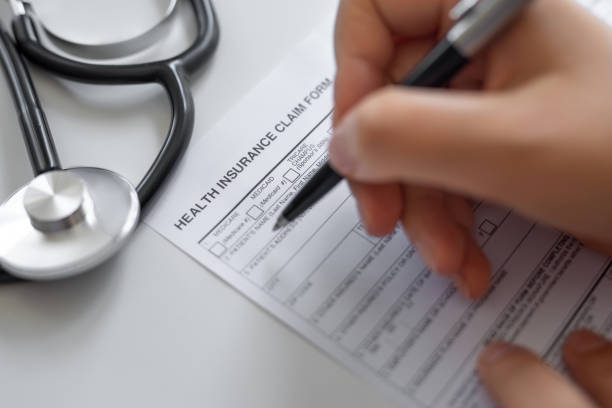How to get medical insurance, traveling abroad is exciting, but it comes with risks like unexpected medical emergencies. Having medical insurance for international travel ensures peace of mind, covering you for accidents, illnesses, or hospital visits while away from home.
This guide explains how to easily get medical insurance for international travel, using simple steps and practical tips to help you choose the right plan without stress.
Why You Need Medical Insurance for International Travel
When you travel internationally, your regular health insurance may not cover medical expenses abroad. Without proper coverage, a simple doctor’s visit or emergency hospital stay could cost thousands of dollars. For example, a broken leg in Europe or a sudden illness in Asia could lead to hefty bills.
Medical insurance for international travel protects you from these costs, ensuring you get care without financial worry. Coverage may also extend to trip cancellations, lost baggage, and emergency evacuations, depending on the current plan.
Step 1: Understand Your Travel Needs
Before buying medical insurance, think about your trip. Ask yourself these questions:
- Where are you going? Some countries, like those in the Schengen Area, require proof of medical insurance for visa approval.
- How long will you stay? Short trips (a few weeks) need different coverage than long-term travel (several months).
- What activities will you do? High-risk activities like skiing or scuba diving may require special coverage.
- Do you have pre-existing conditions? Some plans cover existing health issues, but you may need to declare them upfront.
Knowing your needs helps you pick a plan that fits your trip and budget. For example, a backpacker in Southeast Asia might need basic coverage, while a family vacationing in Europe may want comprehensive protection.
Step 2: Research Reputable Insurance Providers
To easily get medical insurance for international travel, start by researching trusted providers. Many companies specialize in travel insurance, offering plans tailored for international trips. Some well-known options include:
- Allianz Global Assistance: Known for flexible plans and 24/7 support.
- World Nomads: Popular for adventure travelers, covering activities like hiking or diving.
- AXA Travel Insurance: Offers comprehensive plans with medical and trip cancellation coverage.
- Cigna Global: Great for long-term travelers or expats needing extended medical coverage.
Check customer reviews on sites like Trustpilot or compare plans on platforms like InsureMyTrip or Squaremouth. These websites let you filter plans by coverage, price, and destination, making it easier to find the best option.
Step 3: Compare Coverage Options
Not all travel insurance plans are the same. To ensure you get the right medical insurance, compare these key features:
- Medical Coverage Limits: Look for plans covering at least $50,000–$100,000 for medical emergencies. Some countries, like the U.S., may require higher limits due to costly healthcare.
- Emergency Evacuation: This covers transport to a hospital or back home if needed. Aim for at least $250,000 in evacuation coverage.
- Pre-existing Conditions: If you have conditions like diabetes or asthma, check if the plan covers them. Some providers offer waivers for pre-existing conditions if you buy the policy soon after booking your trip.
- Trip Cancellation/Interruption: This protects your investment if you need to cancel or cut your trip short due to illness or other covered reasons.
- 24/7 Assistance: Ensure the provider offers round-the-clock support for emergencies, like finding a doctor abroad.
Use comparison tools online to see side-by-side details. For example, a plan for a two-week trip to Europe might cost $50–$150, depending on coverage and your age.
Step 4: Check Visa Requirements
Some countries require proof of medical insurance for entry or visa approval. For instance, Schengen countries (like France, Germany, or Spain) mandate insurance with at least €30,000 in medical coverage, including emergency hospital care and repatriation.
Cuba and Antarctica also have strict insurance requirements. Check the embassy website of your destination to confirm rules before buying a policy. This ensures your insurance meets legal standards and avoids entry issues.
Step 5: Buy Your Policy Early
To easily get medical insurance for international travel, purchase your policy as soon as you book your trip. Buying early has two benefits:
1. Pre-existing Condition Coverage: Some plans only cover pre-existing conditions if you buy within 7–21 days of booking your trip.
2. Trip Cancellation Protection: Early purchase protects your trip costs if you need to cancel for a covered reason, like illness or family emergencies.
You can buy insurance online in minutes. Most providers, like World Nomads or Allianz, have user-friendly websites where you enter your trip details, compare plans, and pay securely.
Step 6: Read the Fine Print
Before finalizing your purchase, read the policy details carefully. Look for:
- Exclusions: Some plans don’t cover high-risk activities, mental health issues, or pandemics.
- Deductibles: Check if you need to pay out-of-pocket before the insurance kicks in.
- Claim Process: Understand how to file a claim, including required documents like receipts or medical reports.
If you’re unsure about anything, contact the provider’s customer service. Clear terms prevent surprises when you need to use the insurance.
Step 7: Keep Policy Details Handy
Once you buy your medical insurance, save the policy documents on your phone and print a copy. Note the provider’s emergency contact number and policy ID. Share these details with a family member or friend back home. If you need medical care abroad, contact the insurance provider first, they can guide you to approved hospitals or clinics and may cover costs directly.
Conclusion
Learning how to easily get medical insurance for international travel is simple when you follow these steps: understand your needs, research providers, compare plans, check visa requirements, buy early, read the fine print, and keep policy details accessible. With the right insurance, you can travel confidently, knowing you’re protected against unexpected medical costs.







